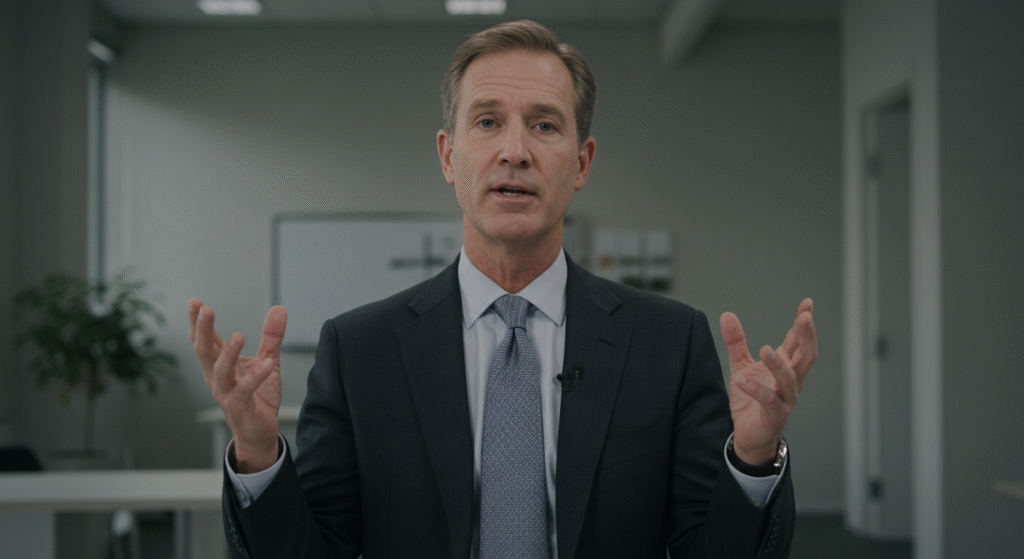Picture this: Your car breaks down on a rainy Monday morning or an unexpected medical bill lands in your inbox. In that moment, you need quick answers, not more stress. That’s exactly when an emergency fund proves its worth.
Having cash set aside for surprise costs, like job loss or urgent home repairs, means you don’t have to panic, rack up credit card debt or put your plans on hold. Building an emergency fund isn’t about fear it’s about peace of mind. With each small step, you gain confidence, knowing you’re ready for whatever comes your way.
In this article, I’ll show you how to start your own emergency fund, keep it growing, and truly protect your finances. The peace of mind is real let’s get you there.
What Is an Emergency Fund and Why Does It Matter?

Life rarely sticks to the script. Car engines fail, water heaters burst, hospital trips show up out of nowhere, and job layoffs can happen with little warning. An emergency fund acts as your personal safety line when those unwelcome surprises pop up. It’s not about expecting the worst it’s about knowing you have backup to make hard days easier. When you set money aside for true emergencies, you protect more than your bank account. You safeguard your plans, peace of mind, and future dreams. Let’s see how this backup works in real situations, what happens if you go without, and why this fund shields your finances like nothing else can.
Common Emergencies People Face
Almost everyone runs into an unexpected event that threatens their budget. Some scenarios are more common than we’d like to admit:
- Job Loss: Losing your main source of income, even for a short time, can put everything from rent to groceries at risk.
- Medical Expenses: Medical bills can strike without warning a sudden illness, an accident, or an ER visit can hit you with costs you didn’t plan for.
- Car Repairs: If your car breaks down, you may need hundreds (or thousands) of dollars to get back on the road so you don’t miss work or family commitments.
- Urgent Home Repairs: Think of pipe bursts, electrical failures, broken furnaces, or roofs leaking during a storm. These issues can’t wait and rarely arrive with a warning.
Statistics show about 38% of adults face at least one financial emergency every six months. Whether it’s an unexpected prescription or a fridge dying on a hot day, these situations are more common than we imagine. That’s why having a dedicated stash of cash for the unexpected is so important.
Quick reference: Common Emergency Fund Uses
| Type | Example Scenarios |
|---|---|
| Income Disruption | Layoff, job furlough, sudden reduced hours |
| Health/Medical | Broken bone, dental emergency, urgent care |
| Auto Repairs | Transmission failure, flat tire, engine problems |
| Home Repairs | Water damage, heating outage, roof leaks |
Risks of Not Having an Emergency Fund
Living without a financial cushion can catch up with you fast. When emergencies land and there’s no backup, many people are forced to:
- Take on high-interest debt: Without available cash, you might reach for credit cards or payday loans. These quick fixes come with steep interest rates that make getting out of debt even harder.
- Drain retirement savings: Pulling money from your 401(k) or IRA to cover today’s problem can set your long-term savings back by years and may trigger penalties or taxes along the way.
- Delay or skip essential bills: When cash is short, delaying rent, mortgage, or utilities can mean late penalties, disconnection, or a dented credit score.
Even a small setback can bring ripple effects into everyday life:
- Increased stress and sleepless nights
- Strained relationships at home
- Falling behind on rent, risking eviction
- Losing access to transportation or healthcare
- Long-term impact on your credit, making future borrowing more expensive or even impossible
Without an emergency fund, the path from unexpected bill to ongoing struggle is often short. In 2024, American household debt reached record highs, with a sharp climb in credit card balances. This all shows how quickly a single unplanned event can drag people into a financial hole. For many, even $500 set aside can mean the difference between a bump in the road and a long, expensive detour.
Mistakes to avoid:
- Relying on credit cards as your only backup
- Treating retirement funds as a piggy bank for emergencies
- Ignoring or underestimating how often emergencies really happen
How an Emergency Fund Protects Your Finances
Having an emergency fund changes everything. Instead of panic, there’s a plan. Imagine:
- Your paycheck stops for a month, but you can still pay the rent, cover groceries, and keep the lights on from your emergency savings.
- The car needs a $950 repair, and you pay it without ever swiping a credit card or paying steep interest to a lender.
- A medical bill arrives, and you don’t skip a beat—you handle it, then go back to focusing on what matters most.
This fund turns life’s setbacks into hurdles instead of roadblocks. You reduce stress, keep your financial habits on track, and avoid making desperate decisions in the heat of the moment. In fact, having as little as $500 set aside has been shown to lower anxiety and help people solve crises faster. When you know you’re ready for the next storm, you walk through life with genuine peace of mind.
Key benefits emergency funds offer:
- Immediate cash for true emergencies
- No need to borrow at high rates
- Protection from draining your retirement or investment savings
- Better mental health and family stability
- Improved credit, since you avoid missing payments or relying on debt
This backup plan doesn’t fix every problem, but it gives you back control. With each step you take toward filling your emergency fund, you put more space between you and the next big surprise. That’s not just smart planning—it’s true financial freedom.
How Much Should You Save?

Figuring out how much to set aside for emergencies can feel overwhelming at first, but this step is all about giving yourself options and control. There isn’t a universal number, but there are proven guidelines that can help you choose a savings target that fits your life right now. By starting small and scaling up as your needs grow, you set yourself up for less worry and more flexibility. Here’s how to make your emergency fund both realistic and personal.
Setting Your First Target: The Value of a ‘Mini’ Emergency Fund
If you’re starting from scratch, the full emergency fund goal can look huge. That’s where a ‘mini’ emergency fund comes in. A smaller, more achievable target is sometimes the spark people need to get moving.
Think of your mini fund as your financial starter pack. Experts widely recommend beginning with an initial savings goal between $500 and $1,000. These amounts are proven to handle most minor emergencies a car repair, a surprise medical co-pay, or travel for a family issue. Even if you’re living on a tight budget, this mini goal is something you can chip away at a little at a time.
Why does this work? Saving your first $1,000 builds confidence and creates a safety zone. It keeps you from needing to use credit cards or tap into retirement money for small setbacks. Once you hit this milestone, you’ll notice money stress starts to loosen its grip, giving you the breathing room to focus on your bigger savings targets.
Some practical ways to reach this first milestone:
- Automate a small amount weekly, even $10 or $20, so you don’t have to think about it
- Funnel bonuses, tax refunds, or cash gifts directly into your fund
- Sell unused or unneeded items and stash the proceeds in your savings
Remember, everyone starts somewhere. Hitting your first $1,000 is like finishing your first lap in a race—momentum gets a lot easier from here.
Calculating Your Safety Net: Personalizing Your Emergency Fund Amount

Once your mini fund is in place, it’s time to aim higher and build a true safety net. Most financial experts recommend saving three to six months’ worth of living expenses. That number isn’t random; it’s based on what it typically takes to recover from major life events like job loss, medical issues, or significant home repairs.
You can zero in on your unique savings goal by breaking down your actual monthly costs. Ask yourself: What are my true essentials? The goal isn’t to replace your full lifestyle, but to cover the basics and stay afloat.
Key expenses to include:
- Rent or mortgage
- Utilities (power, water, gas, cell phone, internet)
- Basic groceries
- Insurance premiums (health, auto, renters)
- Minimum debt payments (loans, credit cards)
- Gas or transit
- Child care or other unique needs
Add up these regular costs for one month. Multiply by at least three (for a stable job or dual-income household), or six (if your job is less secure or you’re self-employed). If your situation includes dependents or you have health concerns, aim for the higher end.
When should you adjust your target?
Life doesn’t stand still. Revisit your emergency fund goal whenever you
- Change jobs or careers
- Move to a new home
- Welcome a new family member
- Take on new financial responsibilities
- Experience shifts in your health or insurance
If your monthly expenses go up, your fund should too. If they shrink (maybe you pay off debt or finish a big project), you might need less.
Quick Tip:
Review your expenses every six months. Set a reminder in your calendar so no big changes slip by. Your emergency fund should grow as your life does.
Building your emergency fund isn’t a race. It’s a steady climb, and each deposit moves you closer to a cushion that protects your future and brings true peace of mind.
Step-by-Step Guide to Building Your Emergency Fund

Building an emergency fund might seem daunting, but it’s a straightforward process when you break it down. The right place to park your savings, smart ways to boost it regularly, and a disciplined mindset all work together to make your fund grow steadily. I’ll walk you through proven steps that fit every budget and lifestyle so you can face any surprise expense with confidence.
Choose the Right Place for Your Savings
Where you keep your emergency fund matters as much as the amount you save. Your money needs to be safe, easy to access, and ideally earning interest to grow over time. Here are some top options that balance these factors well:
- High-yield savings accounts: These accounts, usually offered by online banks, provide interest rates far higher than traditional savings accounts—often around 4% or more in 2025. They are FDIC insured, so your money is protected up to $250,000. Interest compounds regularly, so your savings gain value without risking principal. Plus, liquidity is excellent; you can access money quickly without penalties or delays.
- Money market accounts: Similar to high-yield savings, money market accounts offer competitive interest rates with the added benefit of check-writing privileges or debit card access. These accounts are also insured and provide quick access to cash, making them a solid choice if you want convenience and safety combined.
- Certificates of deposit (CDs) with laddering: While CDs lock your funds for a set time, laddering lets you stagger maturity dates to ensure part of your money becomes available regularly. The trade-off is a slightly higher interest rate, but less immediate access. This approach works if you already have a good base emergency fund and want to maximize return without risking principal.
Avoid keeping your emergency money in places like checking accounts (lowest interest and easy to spend), investment accounts (too volatile), or cash at home (unsafe and no growth). Your fund must be ready instantly when real emergencies strike, which means liquidity and safety come first.
Automate and Boost Your Savings
Saving money regularly doesn’t work well if it depends solely on willpower, which is why automation helps tremendously. Here are practical methods to grow your fund consistently:
- Set up automatic transfers: Arrange your bank to move a set amount from your checking to your emergency savings on payday or monthly. Even $25 or $50 can add up fast without feeling painful since it happens automatically.
- Round up your purchases: Some apps and banks offer automatic rounding up of every purchase to the nearest dollar and put the difference into savings. It’s like pocket change that piles up without you noticing.
- Put windfalls to work: Tax refunds, bonuses, birthday cash, or any unexpected income provide great chances to inject a lump sum into your fund. Resist the urge to spend it and see this money as a shortcut to your goal.
Staying motivated is key, too. Track your progress visually using apps or charts. Celebrate small wins like hitting $500 or $1,000. Remind yourself how every deposit builds your “financial armor” against stress and big bills.
Stay Disciplined and Replenish When Needed

Once you’ve built your emergency fund, your job shifts to protecting and restoring it whenever you use it. Discipline separates an emergency fund from a general savings account.
- Use it for true emergencies only: Think sudden job loss, major car repairs, urgent medical bills, or home damage. Avoid dipping into this fund for discretionary spending or planned expenses.
- Replenish quickly after withdrawals: When you do tap into your emergency fund, make it a priority to rebuild it as soon as you can. Resume automatic transfers, increase deposits if possible, and funnel extra income into it.
- Reassess your target regularly: Life changes new job, higher expenses, family additions so your emergency fund goal should adjust to keep pace with your needs.
Avoid treating your emergency fund like a backup spending account or rainy-day “just in case.” Consistent habits and boundaries keep it strong and ready when real emergencies come knocking.
Building your emergency fund this way creates a reliable cushion that brings calm in crisis. It’s not about how fast you save but about steady practice, smart placement, and thoughtful use over time. That’s the path to real financial security you can count on.
Conclusion
Building an emergency fund is more than just a financial goal it’s a way to protect your peace of mind and keep control in uncertain times. Starting small, even with a few hundred dollars, sets the foundation for greater stability when surprises occur. As you watch your fund grow, you’ll find confidence in knowing you have a true cushion to handle emergencies without resorting to debt or dipping into retirement savings.
Trust the process and keep your emergency fund accessible, protected, and reserved for real crises only. This steady practice turns uncertainty into preparedness and helps you face the future with assurance. Remember, every dollar saved builds freedom and calm that no unexpected event can shake.
Take the first step today. Your future self will thank you for having this vital financial safety net in place. Share what you’ve learned and join the conversation how are you planning to build your emergency fund?




